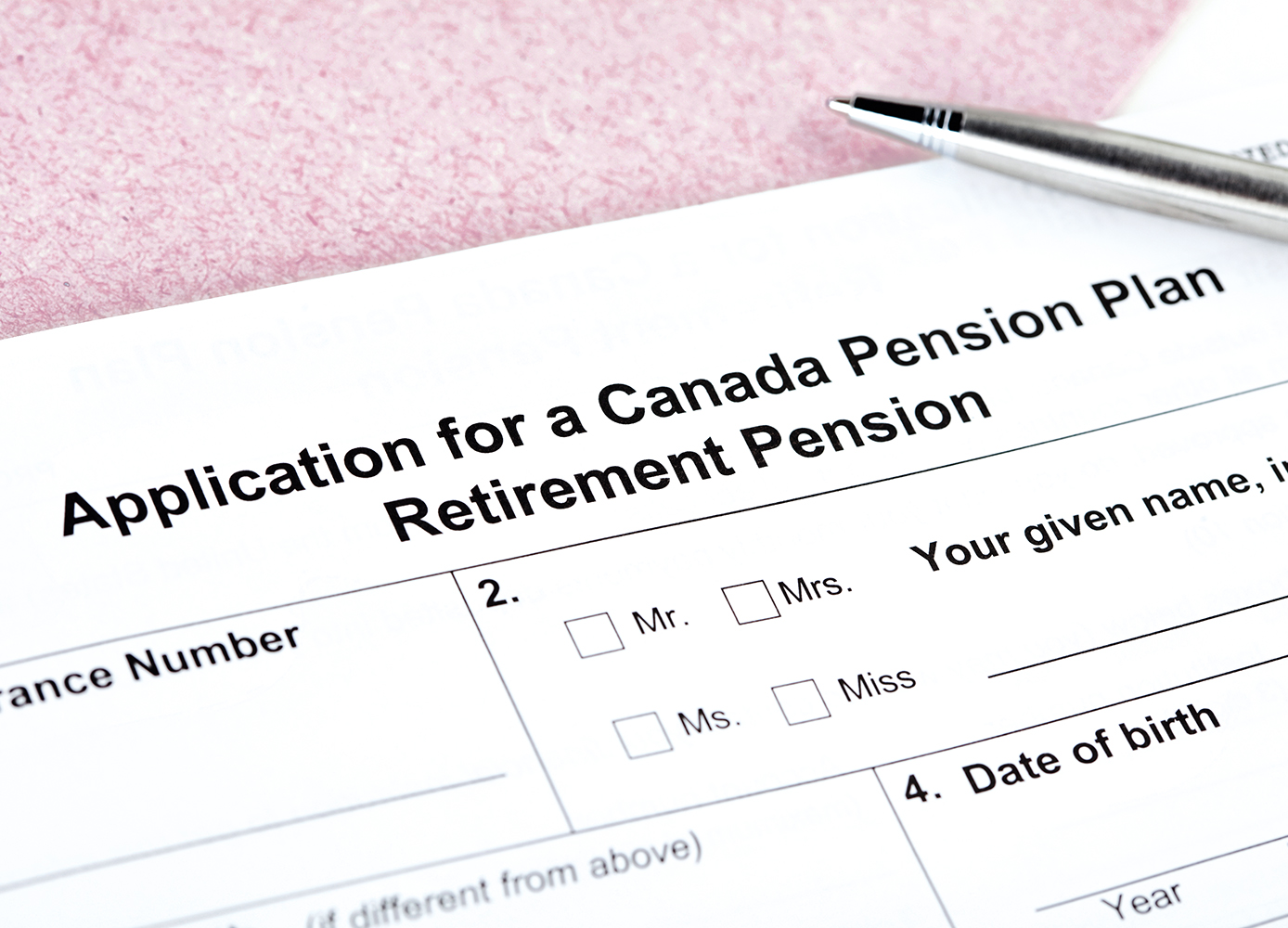It’s easier to plan if you know what to expect
By Olev Edur
Over the years, Good Times has received many letters from readers wondering when they should begin receiving Canada Pension Plan (CPP) benefits. At age 60? At 65? Or should you wait even longer, to age 70? And what about Old Age Security (OAS); should you hold off on that, as well?
Prior to 2012, the answer to this type of question was fairly simple—you could take reduced CPP retirement benefits as early as age 60 (subject only to a minor work-related restriction) rather than at the usual retirement age of 65, and your payments were reduced. But the amount you could collect between ages 60 and 65 offset a lot of the increased payments you’d get by starting at age 65, so the break-even point didn’t arrive until your late 80s or even 90s, depending on your circumstances. There was therefore a lot to gain and little to lose by starting CPP as early as possible. As for OAS, there was no choice—apply at 65 or forgo benefits without any offsetting increases in later years.
Now the situation has become a lot more flexible, and more complicated. For one thing, you now must continue paying CPP premiums until at least age 65 regardless of how early you start taking benefits (previously you didn’t have to contribute premiums after age 60 if taking early benefits). This change, combined with adjustments to the rate of the monthly increases, resulted in the advantage of taking benefits at 60 rather than 65 being substantially diminished.
In addition, you can further increase your CPP payments now by deferring uptake until as late as age 70 (beyond which age the payments no longer increase). You also can increase your OAS payments by deferring uptake from age 65 until age 70. The box below (“Public Pension Deferrals: Doing the Math”) summarizes the dollar differences that deferring OAS and CPP until age 70 could make.
The result is more flexibility in terms of timing the start of your government pension benefits. But the cost/benefit calculation can become complex, because many further factors may come into play depending on your circumstances.
A few basic rules to consider
In most cases, the difference made by deferring or accelerating your government pension benefits will be relatively minor. The government has structured these new payment schedules around actuarial statistics, so that for the average person, it doesn’t really make a lot of difference when you choose to start. The decision may therefore often be based as much on personal preference as on the math involved.
On the other hand, if your circumstances are not the norm, then creating the right strategy can be more complicated. There are, however, a few general rules of thumb that can be applied to help you get started in determining the best strategy for maximizing your public pensions.
RULE 1: It all depends on your life expectancy.
The first and most important consideration in determining the appropriate approach to your government pension strategy is your life expectancy. The longer you live, the more you stand to benefit from delaying your uptake of both CPP and OAS. This is simply because the more of those higher payments you receive after deferral, the more they will outweigh the benefits that were forgone in earlier years.
“Life expectancy is always going to be the main factor,” says Doug Runchey, a pension and benefits analyst with DRpensions.ca in Union Bay, BC. “If you live to an average age, then it won’t make a big difference when you start your benefits, so it’s not really worth consideration. But if your life expectancy is other than average, you’ll have to make a best guess as to how long you can expect.”
So if, for example, your parents and other family members all lived well into their 80s or 90s, then other things being equal, you can probably expect the same for yourself. Similarly, if you’re in good health, eat carefully, exercise regularly, don’t smoke, drink in moderation, have annual medical checkups, and generally look after yourself, then barring unforeseen risks, you can probably expect to live at least into your 80s.
Conversely, if your family’s health history is less than ideal, there could be an advantage to taking both CPP and OAS as early as possible (age 60 for CPP, age 65 for OAS), in order to reap as many benefits as possible while you’re still capable of reaping. “If you’ve just been given three months to live, why would you defer your CPP or OAS and get three months of nothing rather than three months of benefits?” Runchey asks.
However, Runchey notes that an exception may apply for someone not yet 65 who suffers from a severe and ongoing disability and qualifies for the disability tax credit (DTC). Since CPP disability benefits are higher than pension benefits, it would be better to continue with the disability benefits until age 65 (when they must end) and start the regular pension at that point.
RULE 2: Think twice about collecting while still working.
More and more Canadians are continuing to work past age 65; the latest Canada Revenue Agency (CRA) income statistics for the 2017 taxation year (based on almost 100 per cent of the returns filed that year) show that among almost two million Canadians aged 65 to 69, more than 700,000, or 35 per cent, reported income from employment, businesses, or professional practices; among 1.6 million aged 70 to 74, 227,000, or 14 per cent, reported such work income in 2017.
As long as you’re still working, it may be counterproductive to take benefits at the same time. Any pension benefits you receive will be added to what may already be a significant income, meaning that a large chunk of those benefits may be taxed away each year (and you also may become subject to the 15 per cent OAS clawback at high income levels).
It’s better in most such cases to wait until you have left work and your income falls into a lower tax bracket. “I would have to say that, generally, starting to take benefits while you are still working is not a good idea,” Runchey says.
RULE 3. Earlier may be better for GIS recipients.
If your total retirement income excluding OAS is going to be low after age 65—say, less than about $18,000—then you may be entitled to an OAS adjunct called the Guaranteed Income Supplement (GIS). This program can provide almost $11,000 in tax-free yearly income (if your other income is zero), but there’s a catch: every dollar of other income you receive reduces your GIS entitlement by 50 cents. As a result, you may be better served by taking CPP as early as possible, even if you’re still working.
“If you know you are going to be eligible for GIS as part of your retirement income at age 65, then taking CPP earlier rather than later can be beneficial,” Runchey says. “If you get GIS at 65 but take CPP at age 60, you would receive five years’ worth of benefits before the 50 per cent reduction is applied. Then, when you do start receiving GIS, your CPP payments are lower than they would have been if you’d started at age 65, but you get back 50 per cent of that difference through higher GIS payments. So there can be a double benefit to starting early.”
Further complications
While the foregoing are general rules, many other factors can complicate the challenge of creating an optimal OAS/CPP pension strategy. Couples, for example, must factor into their calculations the issue of survivor benefits. Whereas an RRSP or TFSA balance reverts in its entirety to a surviving spouse, CPP and OAS income streams may be lost in their entirety, or at least substantially, depending on the specifics. There may therefore be less reason for deferring those benefits, while giving priority to building up personal savings.
For the self-employed, CPP deferral loses some of its advantage because you must pay double the premiums until at least age 65, and must continue to do so if you want to start collecting benefits later than age 65. For others, given today’s record-low interest rates, there may be a greater advantage to deferral, because the growth rate of the benefits may exceed the growth rate if you were to take that money and invest it.
“The calculations can get very complicated,” Runchey points out. “You need to consider your needs on an individual basis; you can’t take a generic approach. You have to make sure you know the actual numbers for your benefits at various ages, from 60 to 65 to 70, and you need to know what the impact will be on other items in your retirement income stream, such as GIS.”
Regarding the actual numbers, Runchey advises against blindly relying on government estimates of your future CPP entitlement. “If you’re using the estimates that Service Canada provides, you need to use those numbers with a degree of caution,” he says. “They’re valid only if you continue to work right up to age 65, earning the same average salary. If, for example, you want to retire at age 55, your CPP benefits will be less than the estimate because there will be 10 years of zero earnings factored into your final entitlement figure. Those Service Canada estimates aren’t carved in stone.”
RULE 4: Follow your needs and your heart.
All of which brings us to a fourth rule: there may be many situations in which the mathematics become irrelevant. If your retirement finances are such that you need the money as soon as possible, then there’s no point even discussing the pros and cons of deferrals. By the same token, if you don’t need the money, then other things being equal, why not defer?
In addition, bear in mind that retirement isn’t a constant condition. Many financial advisors speak of the “go-go,” “slow-go,” and “no-go” phases of retirement, reflecting the fact that while we may envision retirement as an ongoing whirlwind of golf, travel, hobbies, and whatnot, the reality is that we all start to slow down in our 70s, and certainly by our 80s we’re more inclined to stay close to home and be less active.
“Less active” usually translates into less spending, so there’s logic behind the notion of taking the money sooner, while you can still enjoy it; later on, you may be unable to benefit to the same extent. And you can take comfort in the fact that, as noted earlier, it probably won’t make a whole lot of difference to your retirement finances in the long run.
———–
Public Pension Deferrals: Doing the Math
The following are some basic figures showing the mathematics of deferring your OAS and/or CPP pensions. All benefit and premium figures are the maximum amounts provided as of September 2020 and are based on benefits for a single person. Break-even calculations are based on maximum times permitted for accelerating or deferring benefits.
People who have lived in Canada most of their lives are entitled to the maximum OAS benefit, but CPP contributions and benefits, on the other hand, depend on your employment/self-employment history and few people actually receive the maximum benefit. In 2019, for example, the average CPP retirement benefit at age 65 was $679.16 a month, significantly lower than the maximum of $1,154.58 for that year. However, the break-even points should remain constant regardless of how much you’re actually entitled to receive.
Old Age Security (OAS)
The maximum benefit for a single person starting to collect OAS at age 65 is currently $613.53 a month, or $7,362.36 a year. This benefit increases by 0.6 per cent per month, or 7.2 per cent per year, if benefits are deferred beyond the month in which you turn age 65. The increases end at age 70.
The maximum benefit for a single person starting to collect OAS at age 70 is $834.40 a month, or $10,012.80 a year, meaning that the added benefit from deferral is $220.87 a month, or $2,650.45 a year.
The break-even point at which those added benefits from starting at age 70 fully offset the $36,811.80 in lower benefits received between ages 65 and 70 is about 14 years, or age 84.
Canada Pension Plan (CPP)
CPP is more complicated because there are premium payments to consider, a 10-year window for deferrals, and possibly a Post-Retirement Benefit (PRB) to add to the mix.
The maximum yearly premium payable is $2,898.00 ($5,796.00 for the self-employed).
The maximum retirement benefit at age 60 is $752.53 a month, or $9,030.37 a year. This benefit increases 0.6 per cent for each month after your 60th birthday that you defer start-up. Note that you must continue making premium contributions until at least age 65, even if you start collecting benefits earlier; these contributions will qualify you to receive the PRB and increase your future monthly benefits slightly.
If you deduct premiums from benefits, the maximum net amount receivable from age 60 to 65 is $6,132.37 a year, or $30,661.85 over five years ($3,234.37 a year, or $16,171.85 over five years for the self-employed). In addition, the PRB might add another $2,000 to these totals over five years, and $1,500 annually thereafter, bringing the total annual benefit to about $10,500 by age 65.
The maximum retirement benefit starting at 65 is $1,175.83 a month, or $14,109.96 a year—about $3,600 higher than if starting at 60 (and collecting the maximum PRB). So the break-even point at which benefits received from age 60 to 65 are exceeded by higher yearly payments is about nine years, or by age 74 (a mere five years, or by age 70, for the self-employed).
After age 65, subsequent CPP deferrals are accorded a 0.7 per cent monthly increase, or 8.4 per cent a year, and the maximum retirement benefit starting at age 70 is $1,669.68 a month, or $20,036.14 a year. The added benefit from deferral until age 70 is thus $493.85 a month, or $5,926.20 a year.
The loss of five years’ benefits between ages 65 and 70 ($70,549.80) plus the cost of five years’ additional contributions between 65 and 70 ($14,490, or $28,980 for the self-employed) means that the total cost of deferral from 65 to 70 is $85,039 ($99,528 for the self-employed). Given the $5,926.20 increase in yearly benefits, the break-even point would be about 14.35 years, or at age 84 (about 16.8 years, or at almost age 87 for the self-employed).
iStock/powerofforever.






